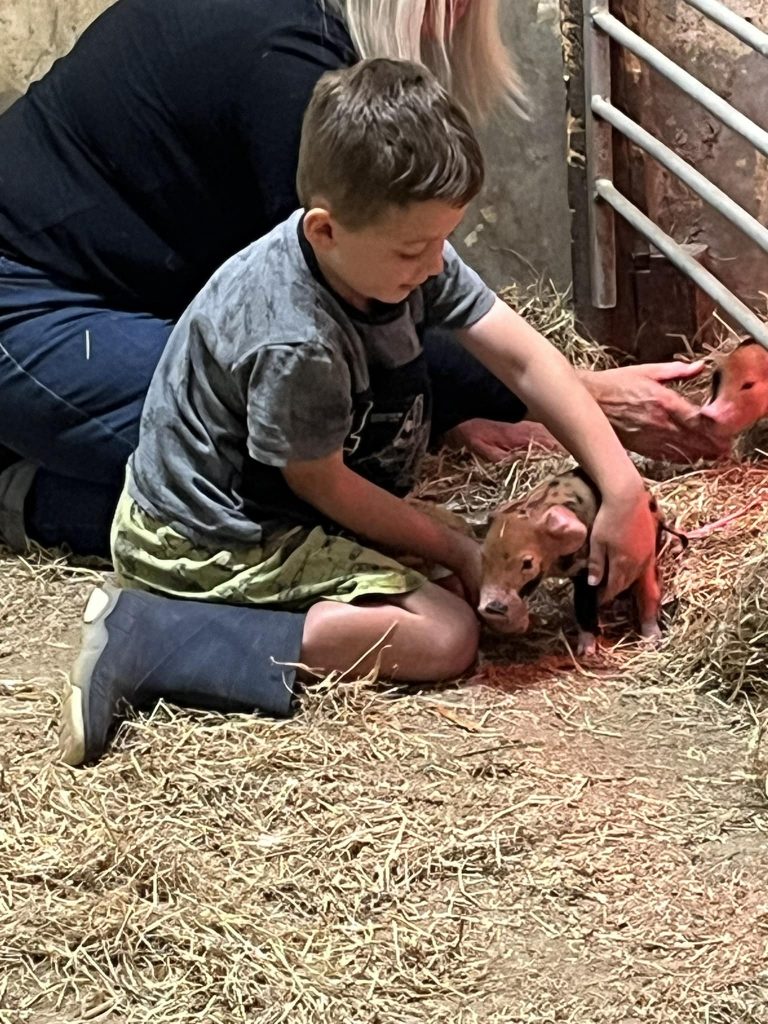
Selection for Breeding and Observational approaches for the Newborn
Selection for Breeding
Among us, some maintain a closed herd, while others do not, often due to the practicality of keeping two sows not justifying the presence of a boar. In such cases, the option of hiring a boar becomes viable. Regardless of the approach, prioritising biosecurity remains crucial. Should hiring a boar is your preference, ensure you know the boar’s recent history; when was the boar last hired out, his health plan (wormed, vaccinated for ery/parvo) and, of course, ensure that the boars’ size suits your sow or gilt.
When selecting Oxford Sandy and Black pig (OSB) breeding stock, choose from OSB sows and gilts that have consistently produced robust litters. This indicates their strong placental efficiency, which ensures optimal oxygen and nutrition exchange therein. Furthermore, each breed possesses distinct attributes that are essential for going forward for breeding and advancing our breed’s quality. To better understand these attributes, explore the Oxford Sandy and Black Pig breed conformation HERE
Piglet Observation Approach
Being present during the farrowing process is not only exciting but also immensely helpful. It allows you to monitor various critical aspects, starting from the moment the OSB sow/gilt begins farrowing until the last piglet is born, and you witness the completion of the farrowing process with the passing of the two afterbirths. Additionally, you can ensure that every piglet receives its crucial first dose of colostrum. It is worth noting that colostrum declines approximately six hours after the onset of farrowing.
Your presence enables you to assist vulnerable piglets in accessing teats ensuring they receive nourishment without difficulties.
By closely monitoring the farrowing process, you can also promptly identify any signs of ill health among the piglets and follow the prescribed veterinary protocols for treatment. Moreover, you can verify that the piglets are positioned either on or under a heat source and not heaped up on top of each other which will indicate that they are cold. Bear in mind that the piglet has no brown fat (used by mammals to generate heat quickly) so the piglet cannot use fat to generate heat in cold conditions. Therefore, piglets require environmental temperatures of 34°C or more for the single new born piglet, or 25-30°C or more for the piglet able to huddle in order to maintain body temperature.
The Oxford Sandy and Black Pig Group is UK’s only pig breed that is a registered charity in England & Wales (1190469) and Scotland (SCO52662). We are creating a better future for our breed, the bloodlines and its breeding potential together with our Independent Pork Producers, Breeders and Keepers. Please consider clicking our donate button so we may continue to look after our breed and our supporters.
Follow us on Facebook and see how we support, help and inspire individuals about our rare breed